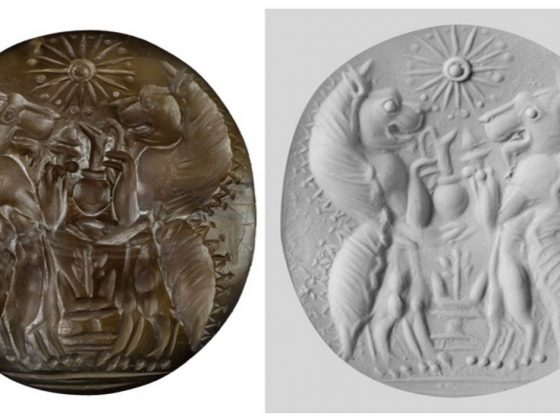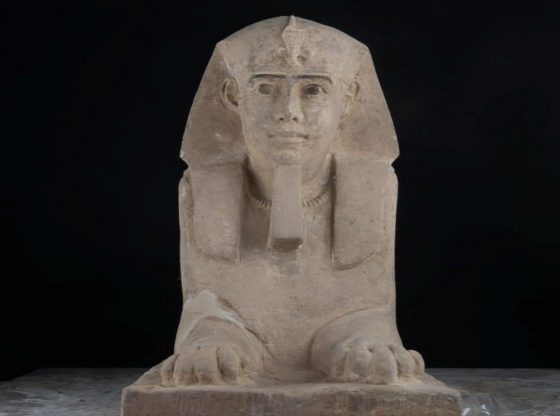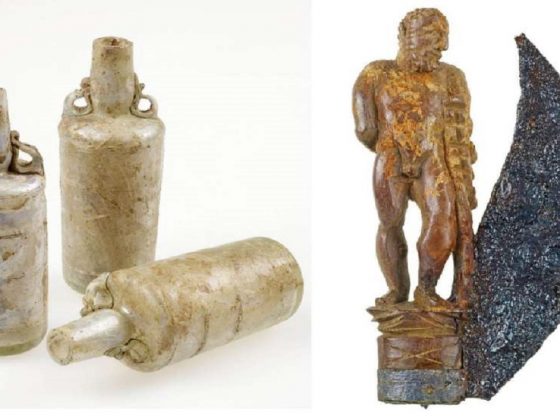What does the wreath symbolize as often seen depicted on Julius Caesar’s head?

A leader’s headwear
The Roman general Julius Caesar wore a wreath of laurel on the head to show that he was a powerful and strong leader.
Just as the ancient Greeks and the Etruscans before them, the ancient Romans associated the laurel wreath with victory and success. They saw it as a badge of honor and was only given to a select few who had achieved something extraordinary.
In Ancient Greece, wreaths were awarded to victors in both athletic competitions, including the ancient Olympics, and for military prowess. It was made of wild olive-tree known as “kotinos” (κότινος). In Greek mythology, Apollo is represented wearing a laurel wreath on his head. The Etruscans gave their kings thin gold wreaths.
Julius Caesar
Caesar received the wreath for his many victories on the battlefield. It was awarded to him at his triumphal procession through Rome in April, 46 BCE. A Roman triumph (triumphus) famous for its extravagance, hailing the commander for his victories in four wars: the war in Gaul, the war in Egypt, the war against Pharnaces of Pontus and the war against king Juba of Numidia.
The laurel wreath was normally worn only on the day of the triumph, but when Caesar was appointed dictator in 44 BCE, he was wearing the wreath again.
According to the Roman author Suetonius, the wreath suited Caesar especially well with the green leaves hiding his balding head.
The laurel wreath was not the Romans only badge of honor. They used many types of wreaths produced by different plants to reward their heroes.
Still in use today
Today, the term laureato is used in Italy to refer to any student who has graduated and right after the graduation ceremony, the student receives a laurel wreath to wear for the rest of the day.
A laurel wreath is also used to symbolize academic achievements in many other countries; in Finland, at the University of Helsinki, it is given during the ceremony of conferral for masters’ degree. At Reed College in Portland, Oregon, United States, members of the senior class receive laurel wreaths upon submitting their senior thesis in May. In Sweden, those receiving a doctorate or an honorary doctorate at the Faculty of Philosophy, receive a laurel wreath during the ceremony of conferral of the degree.
Often used as a motif in architecture, furniture, textiles and in heraldry as well, it can often be seen in various coat of arms, as a charge in a shield, around the shield or on top of it.
Lastly, perhaps you have heard the expression “resting on one’s laurels”? A quite common idiom that refers to someone relying entirely on long-past successes for continued fame or recognition, where to “look to one’s laurels” means to be careful of losing rank to competition.






















